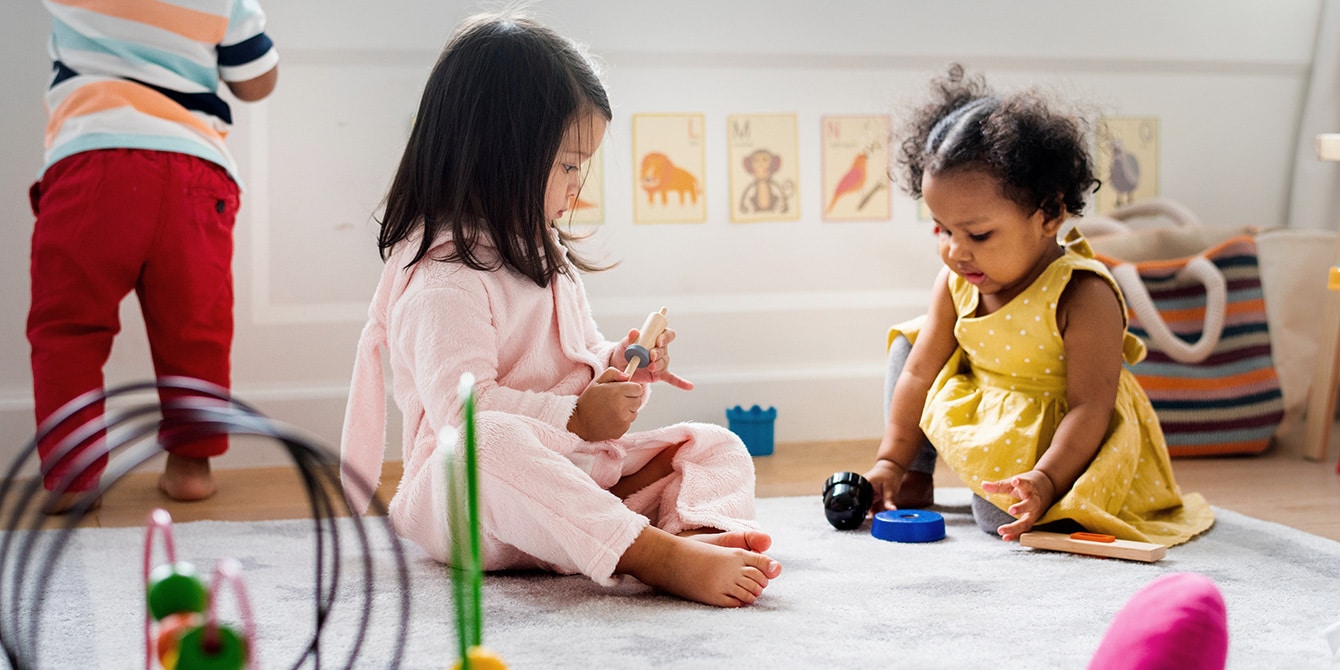Long hours spent at daycare don’t cause behavior problems, study finds
Childcare centers in five countries were studied, including the US.

Rawpixel.com/ Shutterstock
This is a win for all working parents. A new study focusing on child behavior has found that there is no direct link between children who spend long hours at daycare and aggressive or antisocial behavior.
The study, which was published in the journal “Child Development,” collected data on more than 10,000 preschoolers across five countries in North America and Europe. According to the study, there is also no evidence to suggest that a mother’s education level or their household income had any effect how long a child spent in childcare centers. But, most importantly, what the evidence does suggest is that these childcare centers can be beneficial to children’s learning behaviors.
Based on parent and teacher reports, the international researchers found that there were no “externalizing” behaviors such as, bullying, picking fights, hitting, biting or hair pulling, among others.
Catalina Rey-Guerra, a Ph.D. candidate at Boston College in Massachusetts and the group leader, wrote, “This is reassuring given that trends in child-care use and parental participation in the labor force are likely to remain stable.”
“Given the existing evidence of long-term achievement benefits of early childhood care and education for children, I think our findings speak to both the direct positive effects that attending child care might have on children and also the indirect positive effects through their parents being able to participate in the workforce without the fear of any harmful effects to their child,” Rey-Guerra added.
Related: How to handle difficult school drop-offs, according to an expert
The idea that children who spend time in daycares have behavioral problems has been in debate for a very long time. Not just among researchers but amongst parenting circles. Moms deal with all kinds of judgements on their parenting styles but often there can be questions, judgements or looks that come when someone learns that your child goes to daycare.
It’s important to note that a lot of the previous research on this topic relied very little on US children.
Rey-Guerra points out, “Disagreements have been difficult to settle because the vast majority of studies done are purely ‘correlational,’ leaving open many alternative explanations as to why children who spend large amounts of time in center care could be at risk other than center care per se.”
She continues, “Our aim was to improve the research, providing rigorous tests of whether increasing a child’s time in center-based care leads to increases in problem behaviors, and using data from seven studies from five countries.”
Related: The U.S. childcare crisis led me to change my career and lean into the village around me
The different hypotheses for how or why children exhibit certain behaviors ranges from severing the mother-child attachment to simply picking up on other kids’ behaviors in a classroom. But, as Rey-Guerra points out, most of these theories have not proven to be true.
However, one thing that the evidence does suggest is that the teacher to child ratio does play an important role. So, what does that mean? Well, overcrowded childcare centers increase the risk of bad behaviors. For clarity, the ideal ratios are, 1:4 for infants, 1:7 for toddlers, and 1:8 for preschoolers.
Carol Weitzman, MD, a pediatrician in the Division of Developmental Medicine at Boston Children’s Hospital and an associate professor at Harvard Medical School, who was not involved in the study, commented that ultimately the most important factor is that a child’s needs are being met regardless of their circumstances.
Weitzman says that, “You are more likely to see maladaptive and stressed behaviors such as aggression, acting out, and mood dysregulation,” in those children whose needs are not being met.
“Quality child care scaffolds children so they can learn to identify and describe emotions and negotiate increasingly complex social situations,” she says. And since preschoolers can share and take turns, the experience of being in a daycare with others can help them develop friendships and be more understanding.
She adds, “When women comprise approximately 50% of the U.S. workforce, our questions should be about how to ensure quality and affordable care for all children and how to establish and enforce child-friendly parental leave policies.”
Weitzman notes that the US ranked lowest in comparison to the other four countries in the study in terms of paid parental and maternity leave.
She says, “In fact, we are last when compared with 40 other developed nations.”